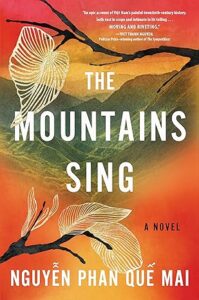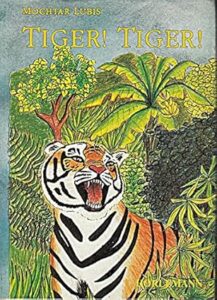Has it happened to you that you wanted to watch only one or two episodes of a TV series before sleep? And the next thing you realize is that it is far after midnight and you have watched more episodes than you planned. Or, you told yourself that I am going to read a couple of pages before sleep and when you check the time; it is 2 in the morning and still, you cannot put the book down and go to sleep!
What is the secret of those TV series or books?
Compare these two versions of a hypothetical chapter of a hypothetical book: version 1: the chapter finishes when the character goes on a journey. Version 2 finishes when the character went on a journey, got off the bus, and missed the bus in the middle of a desert. The latter version may have only two paragraphs more than the former version. Yet, their influences on our memory are strikingly different. Version 2 doesn’t let you put down the book. You start the next chapter without a doubt. You have got to know what the character is going to do with no money, alone in a desert! Your brain compels you to continue reading. This is the Zeigarnik Effect.
Zeigarnik Effect
In the 1920s, Bluma Zeigarnik, a Lithuanian-Soviet psychologist noticed an interesting aspect of human memory. She found out that waiters remember the details of the unpaid orders very well. Yet, after the customers pay the bills the waiters couldn’t remember the details anymore. She conducted studies to compare the memory’s functionality in relation to incomplete and complete tasks. Her research indicated that our brain remembers uncompleted or interrupted tasks better than completed tasks. Today, we know this aspect as the Zeigarnik Effect.

One of the stress management techniques is to write down all tasks. Because for our memory, it doesn’t matter how much time and energy we need to finish a task. It only considers if the task is finished or not. If unfinished, our memory keeps reminding us of that task, and these reminders create mental tension.
We can use the power of the Zeigarnik effect constructively. If you want to learn a new skill, for example, a new language, it is better to study that language for 15 minutes every day, rather than 3 hours at once a week.
In storytelling, the Zeigarnik effect is indispensable. Leave the reader with at least one question! They’ll come back to read more. If you finish a chapter with an open loop, the reader turns the page to read the next chapter. What about finishing a chapter book with an open loop?
In this blog post, we reviewed the three types of book series (Episodic (Procedural) series, Interlinked standalone series, and Serialized series). The Zeigarnik effect is only applicable to the last type—Serialized series.
It is worth mentioning that using the Zeigarnik effect doesn’t mean to leave the Story Question of the current book open in order to promote the next book. I will explain this point with an analysis of the DRAGON MASTERS series written by Tracey West. The first book was published in 2014 and the 23rd book will be published in 2023.
The Zeignarik effect in Chapter books
The series is about different types of dragons. For some unknown reason, only children are able to connect with the dragons and train them. A mysterious stone—called the Dragon Stone—selects the children who, afterward are called the Dragon masters.
Book 1, RISE OF THE EARTH DRAGON, starts with introducing the main character of the series: a farmer boy called Drake. He joins the three dragon masters who already have been selected and have been living in the castle for a while. A magician called Griffith is in charge of the Dragon Masters. The other three Dragon Masters are connected with their dragons and discovered their unique ability. The Story Question of the first book is that Drake doubts if he can connect with his dragon. His dragon, called Worm, seems to have nothing special. In the Climax of the story, when all dragon masters and dragons are trapped in a tunnel, Drake connects with his dragon and discovers his ability in moving things with his thoughts.

Yet, on the book’s last page, the reader learns red shining ball that appeared in the tunnel and caused the disaster was an alarm for serious danger. As Griffith says “This is serious. Danger may be heading our way.” Which danger? If you want to know, read book 2!
Book 2, SAVING THE SUN DRAGON, reveals that the red shining ball they encounter in the tunnel has sickened one of the dragons—the Sun Dragon. 
The Dragon masters with the help of Griffith have to find a way to heal the dragon and this is the Story Question of the book. Would they be able to heal the Sun Dragon or not? They succeed. Here is another example of the Zeigarnik effect. The last chapter tells us that a dark magician, called Maldred, had sent that red shining ball, and his danger is looming. How? We don’t know. Read book 3!
Book 3, SECRET OF THE WATER DRAGON, shows the danger of Maldred, the dark magician, is closer than the Dragon masters and Griffith assumed.

Book 3, SECRET OF THE WATER DRAGON, shows the danger of Maldred, the dark magician, is closer than the Dragon masters and Griffith assumed. Maldred manages to still the Dragon Stone and causes other problems. The Dragon Masters get the stone back and take care of the other problems. Thus, the Story Question is answered. As you may guess, book 3 finishes with a new loop. The last sentence of the book is from Griffith: “It is time for us to rise against Maldred!”
If you want to know how, read book 4, POWER OF THE FIRE DRAGON!
Do you see how masterfully Tracey West has hooked us to read the next book of her series?
I write regularly blog posts about the craft of writing children’s books. PictureBookPedia is all about picture books and ChapterBookPedia is all about chapter books. My quarterly newsletter sends the list of new blog posts to your inbox.




